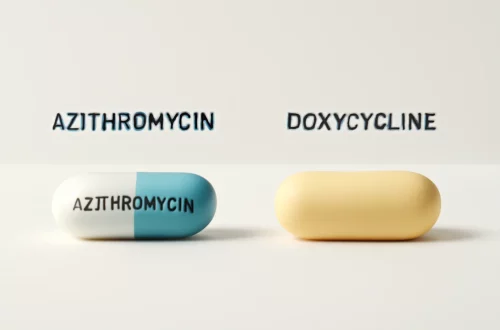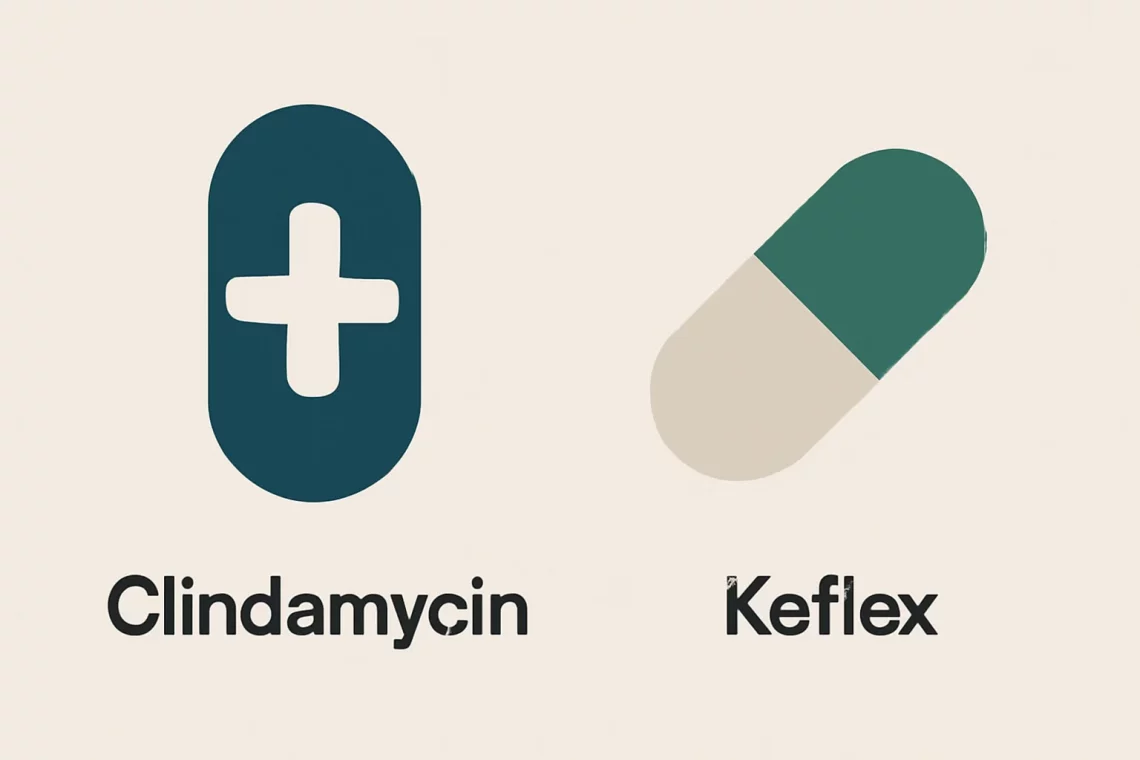-
Cephalexin vs Keflex: Understanding Their Differences and Uses
Cephalexin and Keflex are two terms that often arise in discussions about antibiotic treatments. For many, the distinction between these two names may seem trivial, but understanding the nuances can be crucial for effective treatment. Cephalexin is the generic name for a specific antibiotic that is classified as a cephalosporin. On the other hand, Keflex is a brand name under which cephalexin is marketed. This distinction is essential for patients and healthcare providers alike, as it influences prescription practices and patient education. Antibiotics like cephalexin play a vital role in modern medicine, helping to combat bacterial infections that can range from mild to severe. They work by interfering with the…
-
Amoxicillin vs Omnicef: Which Antibiotic Is Right for You?
Amoxicillin and Omnicef are two antibiotics that have gained significant attention in medical discussions due to their effectiveness in treating various bacterial infections. Both medications belong to different classes of antibiotics, which means they operate through unique mechanisms to combat bacteria. The choice between Amoxicillin and Omnicef often depends on the specific type of infection, the patient’s medical history, and the potential for antibiotic resistance. Understanding how these medications work, their spectrum of activity, side effects, and the situations in which they are best prescribed can help patients and healthcare providers make informed decisions. With the rise of antibiotic resistance, choosing the appropriate antibiotic is more crucial than ever. Both…
-
Methadone vs Sublocade: Choosing the Right Treatment for Opioid Addiction
The opioid epidemic has prompted a greater focus on effective treatments for opioid use disorder (OUD). As healthcare providers and patients seek solutions, various medications have emerged to address the complexities of addiction. Among these, methadone and Sublocade have gained prominence. While both are used in the treatment of OUD, they offer different mechanisms of action, administration methods, and patient experiences. Understanding these differences is crucial for patients, caregivers, and healthcare professionals alike. The choice between methadone and Sublocade can significantly impact a patient’s recovery journey, influencing everything from adherence to overall quality of life. With the rising importance of personalized medicine, it is imperative to explore these treatment options…
-
Benzonatate vs NyQuil: Which Cough Remedy Is Right for You?
The struggle with coughs and colds is a common experience, especially during seasonal changes. As people seek relief from these uncomfortable symptoms, various medications become popular choices. Among them, Benzonatate and NyQuil have garnered attention for their effectiveness in alleviating cough and cold symptoms. However, understanding their differences, uses, and potential side effects is essential for making informed decisions about which medication might be more suitable for individual needs. Benzonatate is a prescription medication that specifically targets cough suppression. It works by numbing the throat and lungs, reducing the urge to cough. On the other hand, NyQuil is an over-the-counter medication that offers a combination of ingredients designed to address…
-
Metformin vs Jardiance: Which Diabetes Medication is Right for You?
Metformin and Jardiance are two prominent medications commonly prescribed for the management of type 2 diabetes. As the prevalence of diabetes continues to rise globally, understanding the differences, benefits, and potential side effects of these medications is increasingly important for patients and healthcare providers alike. Metformin has long been considered the first-line treatment for type 2 diabetes, primarily due to its ability to improve insulin sensitivity and lower blood sugar levels effectively. On the other hand, Jardiance, which belongs to a newer class of diabetes medications known as SGLT2 inhibitors, has gained attention for its unique mechanism of action and additional benefits beyond blood sugar control. Both medications offer distinct…
-
Clindamycin vs Azithromycin: Which Antibiotic Is Right for You?
Clindamycin and azithromycin are two antibiotics that belong to different classes and are often prescribed to treat various bacterial infections. Both medications are effective against specific pathogens but have distinct mechanisms of action and side effect profiles. Understanding the differences between these two antibiotics is essential for both healthcare professionals and patients. Clindamycin is a lincosamide antibiotic that primarily inhibits bacterial protein synthesis, making it effective against anaerobic bacteria and certain Gram-positive organisms. It is often used for skin and soft tissue infections, as well as respiratory tract infections. Azithromycin, on the other hand, is a macrolide antibiotic that also inhibits protein synthesis but acts on a broader spectrum of…
-
Clindamycin vs Keflex: Which Antibiotic Is Right for You?
Clindamycin and Keflex are two antibiotics commonly used to treat bacterial infections. While both medications belong to different classes of antibiotics and target various types of bacteria, they play crucial roles in managing infections. Understanding the differences and similarities between these medications can help patients and healthcare providers make informed choices regarding treatment options. In recent years, antibiotic resistance has emerged as a significant public health concern, highlighting the importance of selecting the appropriate antibiotic for each specific infection. Clindamycin, a lincosamide antibiotic, is often prescribed for serious infections caused by anaerobic bacteria and certain types of streptococci and staphylococci. On the other hand, Keflex, the brand name for cephalexin,…
-
Rybelsus vs Ozempic: Which Diabetes Treatment is Right for You?
In recent years, the conversation around diabetes management has evolved significantly, with a focus on innovative medications that offer new hope to individuals living with Type 2 diabetes. Among these medications, Rybelsus and Ozempic have emerged as prominent players in the landscape of diabetes treatment. Both belong to a class of drugs known as GLP-1 receptor agonists, which mimic the actions of the glucagon-like peptide-1 hormone. This hormone plays a crucial role in regulating blood sugar levels and appetite, making these medications vital for those struggling to maintain optimal glucose control. As the prevalence of Type 2 diabetes continues to rise globally, understanding the differences and similarities between such medications…
-
Fluconazole vs Ketoconazole: Which Antifungal Treatment Is Better?
Fluconazole and ketoconazole are two antifungal medications widely used in the treatment of various fungal infections. They belong to a class of drugs known as azoles, which work by inhibiting the synthesis of ergosterol, an essential component of fungal cell membranes. This disruption leads to the weakening and eventual death of the fungus. While both medications are effective in treating a range of fungal infections, they differ in terms of their spectrum of activity, pharmacokinetics, and clinical applications. Understanding these differences can help healthcare providers make informed decisions when prescribing antifungal therapies. As the prevalence of fungal infections continues to rise, particularly among immunocompromised individuals, the choice between fluconazole and…
-
Lyrica vs Topamax: A Comprehensive Comparison of Two Medications
The landscape of pharmaceuticals is vast and complex, with countless medications available to treat a variety of conditions. Among these medications, Lyrica and Topamax have gained prominence in managing certain neurological and psychological disorders. Both drugs serve specific purposes, but they come with their own sets of benefits and side effects, making the choice between them a critical decision for individuals seeking relief from debilitating symptoms. Understanding these medications requires a deeper look into their mechanisms, uses, and potential side effects. As individuals navigate their treatment options, it becomes essential to evaluate not just the effectiveness of each drug but also how they interact with one another and with the…







































